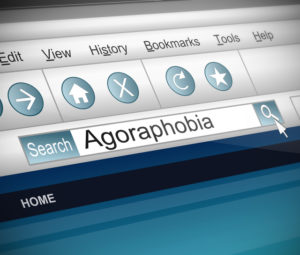
The past year has been hard on most of us. Who hasn’t felt anxious? Who hasn’t wanted to retreat from the world at times? Staying home when possible as COVID-19 rates climbed felt safer — and in many places was required by lockdown rules. Yet, could growing accustomed to feeling less safe in public spaces seed, or feed, the anxiety disorder known as agoraphobia? If you’re wondering whether the discomfort you experience is normal or has crossed a line, read on.
What is agoraphobia?
People with agoraphobia become anxious in places where they feel helpless, out of control, stuck, or judged. Someone who has agoraphobia might avoid places where they might be trapped (such as an office meeting) or put on the spot and judged — perhaps during a conversation at a party. They also may avoid situations or places that feel out of control, such as a trip with other people where they don’t control the schedule and timing, or an open, public space like a park. As a result, people who have agoraphobia often fear leaving their homes.
In the US, about 2% of adults and teens have agoraphobia, according to the Diagnostic and Statistical Manual of Mental Disorders, Fifth Edition. Roughly a third to half of people with agoraphobia have had panic attacks prior to diagnosis.
What are the symptoms of agoraphobia?
A feared situation — or even the thought of such a situation — triggers panic or panic attacks, often when a person is outside of their home. A panic attack is an intense bout of anxiety that is experienced physically through a racing heart, shortness of breath, chest pain, sweating, and dizziness. Worrying about having another panic attack, especially in front of other people, makes agoraphobia even worse.
So, where does the pandemic come in?
Agoraphobia is an anxiety disorder that makes people fear and avoid situations where they feel embarrassed, helpless, or threatened. Their fear of a situation is out of proportion to its true level of risk. Yet fearing public spaces as COVID-19 continues to spread is a normal response to such a threatening event.
According to an American Psychological Association (APA) report, Americans are experiencing a nationwide mental health crisis that could have repercussions for years to come. Their survey shows upticks in mental health issues like stress and anxiety since the pandemic began. However, it is unclear how this relates to agoraphobia. Because crowded spaces are potentially dangerous right now, avoiding them is a natural response, rather than a sign of a disorder. It’s normal to have some fear of public spaces now, because the threat of danger is real.
When do anxious feelings move beyond normal?
If you worry that you may be struggling with agoraphobia or another anxiety disorder, ask yourself these questions:
- Is my response in line with the potential threat of danger?
- Are my loved ones concerned about my level of worry and avoidance?
- Am I following the CDC guidelines to avoid getting or spreading COVID, such as practicing social distancing with people outside of my household, wearing a mask, and handwashing? Or am I avoiding more people and situations than necessary?
If you are concerned about your anxiety, consult with a mental health professional. You can schedule a telemedicine visit to get help assessing whether your fear and avoidance is healthy or problematic. Contact your health plan and ask for a list of behavioral health clinicians.
How is agoraphobia typically treated?
Agoraphobia is often treated with cognitive behavioral therapy (CBT), which helps people understand connections between thoughts, feelings, and actions. Typically, a mental health or behavioral health specialist helps you
- understand the triggers of anxiety and agoraphobia
- understand your internal thoughts about the situation that is creating the fear
- build skills to better tolerate anxiety
- begin to slowly and safely face the situation that creates anxiety and subsequent avoidance. This is generally done by practicing facing the feared situation in a controlled environment.
Medicine, like antidepressants and anti-anxiety medications, is sometimes used along with CBT.
How to get help
Getting over agoraphobia without treatment is difficult (only 10% of people are successful).
The SAMHSA National Helpline (800-662-4357) or website may be able to refer you to mental health clinicians in your state who treat anxiety. Some may accept Medicare or Medicaid, or charge lower fees depending on your income. The National Alliance on Mental Illness also offers helpful resources on their website and through their volunteer HelpLine (800-950-NAMI (6264), or info@nami.org).
Agoraphobia is an anxiety disorder that can seriously limit quality of life, because those who struggle with it avoid many events and social situations. Although it usually will not go away on its own, therapy and appropriate medications can help people address the anxiety and live life fully.
